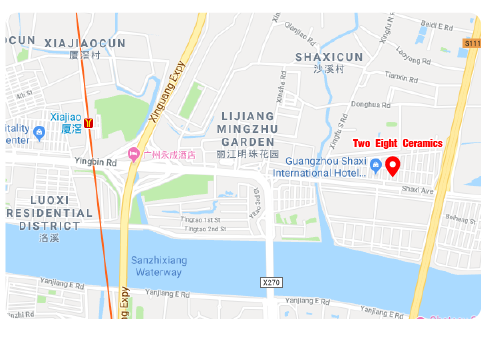Chinese Porcelain Glazing
Chinese porcelain was at a point considered high-tech. For many years, China was a great civilized country in making porcelain. Ceramics are made based on some three elements which are heat, clay, and glaze. They are generally formed to various shapes with the hands where they are molded or with the potter wheel being turned.
Porcelain process includes:
1. Forming
They are low material plasticity that makes porcelain which makes the clay shaping difficult. When a potter’s wheel is used, it throws the clay outwards and upwards and forms the shape that is needed. Plastic condition clay must break when they are pulled. That throwing process is among the remarkable complex process. To casual observers, when throwing is done by a professional in pottery, it seems like effortless and graceful process, but it still masks the truth concerning rotating clay posting momentum and energy in abundance which, when it is slightly mishandled, may lead to the uncontrollable work-piece.
2. Glazing
Porcelain doesn't need to be glazed so they can be liquid impermeable and mostly, they are only glazed to be decorative which may make them resist stains and dirt. Many types of glazes are specifically designed due to the effect they have in porcelain.
3. Decoration
Porcelain undergoes decorating process by custom dinnerware manufacturer under the glaze with pigments which may be copper, cobalt, or colored enamels over the glaze. The modern porcelains are coated using glaze, then proceeds second glaze-firing at high temperature. There is also another once fired method that glaze is used in the un-fired body where two are then fired together in one operation.
4. Firing
Here, un-fired porcelain is heated to have high temperature using kilns so they can set their various shapes. Reason for firing at high temperature is for the body to vitrify and be non-porous.
Key elements for making process:
1. Clay used of Kaolin
Clay is under-grounded rocks over centuries. Kaolin is the type of clay that makes porcelain, and they are found in southeastern China, the place it was mined first. The Chinese custom dinnerware manufacturer mixes a stone powder with Kaolin clay.
There are kilns which are specifically made ovens to fire porcelain. When kilns are hot, it melts the stone where clay is made glass-shinny and hard. When heated in a kiln, the clay maintains its shape. Clay is found in specific places, and most custom dinnerware manufacturers are situated in places that clay is available since it is the key material. There should also be fuel to fire the kiln since the process needs heat.
After the clay is cleaned and prepared, it is mixed with water for easy handling. Clay dinnerware, sculptures, and vessels are made in various forms: shaping through the potter wheel, making with hands, like slab-building, pinching, and coiling, and formed in molds. Clay is thrown to the turning wheel then shaped using hands as spinning continues.
2. Glaze
It is the coat on the pot that makes it waterproof. Its feeling is glass-like when touched. It is made of; clay, flux, glassy minerals, and minerals that add color. Glaze ingredients are mixed with water by the potter where they are applied to sculptures or dinnerware, and mostly they spray or brush, pour, or dip an object being made into the glaze. Glaze recipes are different, making the potters prefer to keep those formula be secretive.
3. Heat
Clay objects are fired using kilns to be usable ceramic. Wet clay is heated to remove water where its particles are melted together to harden the pot and maintain its shape. Kilns consist of three sections: the firebox which stores and contains fuel, the firing chamber that has the pots, and the chimney. Heat is directly moved from the firebox, where it enters the firing chamber, then goes on towards the chimney. Potters who were making pots traditionally in Chinese were using coal and wood as fuel, but the electric kilns have been popular in that they have replaced the previous method of heat.
Various forms of clay need their firing temperatures as well as the firing times to the clay vessel which is still wet before the firing process can explode. Glazes have many colors which vary about the oxygen amount that the kiln will have during firing. Therefore, a potter must carefully watch the kiln during this firing process. After the firing is done, pots are given sometimes so they can cool off before they are removed.
A custom dinnerware manufacturer can design the dinnerware using clay in the pottery, and still, they will produce the best dinnerware that one needs.

Guangdong Hosen Two Eight Industrial Co.,Ltd. is a professional ceramic tableware manufacturer. It is committed to provide customers with one-stop purchasing service for hotel supplies and catering suppliers about 20 years by now. Sitemap
CONTACT US
Mobile: +86-18127955755 / 13694279549
E-mail: haoxin-2@28ceramics.com /
Office Address: 3/F-4/F, Shaxi International Hotel Supplies City, Shaxi Village, Guangzhou City, China
Factory Address: Ditou lndustrial Zone, Fengxi District, Chaozhou City, China




